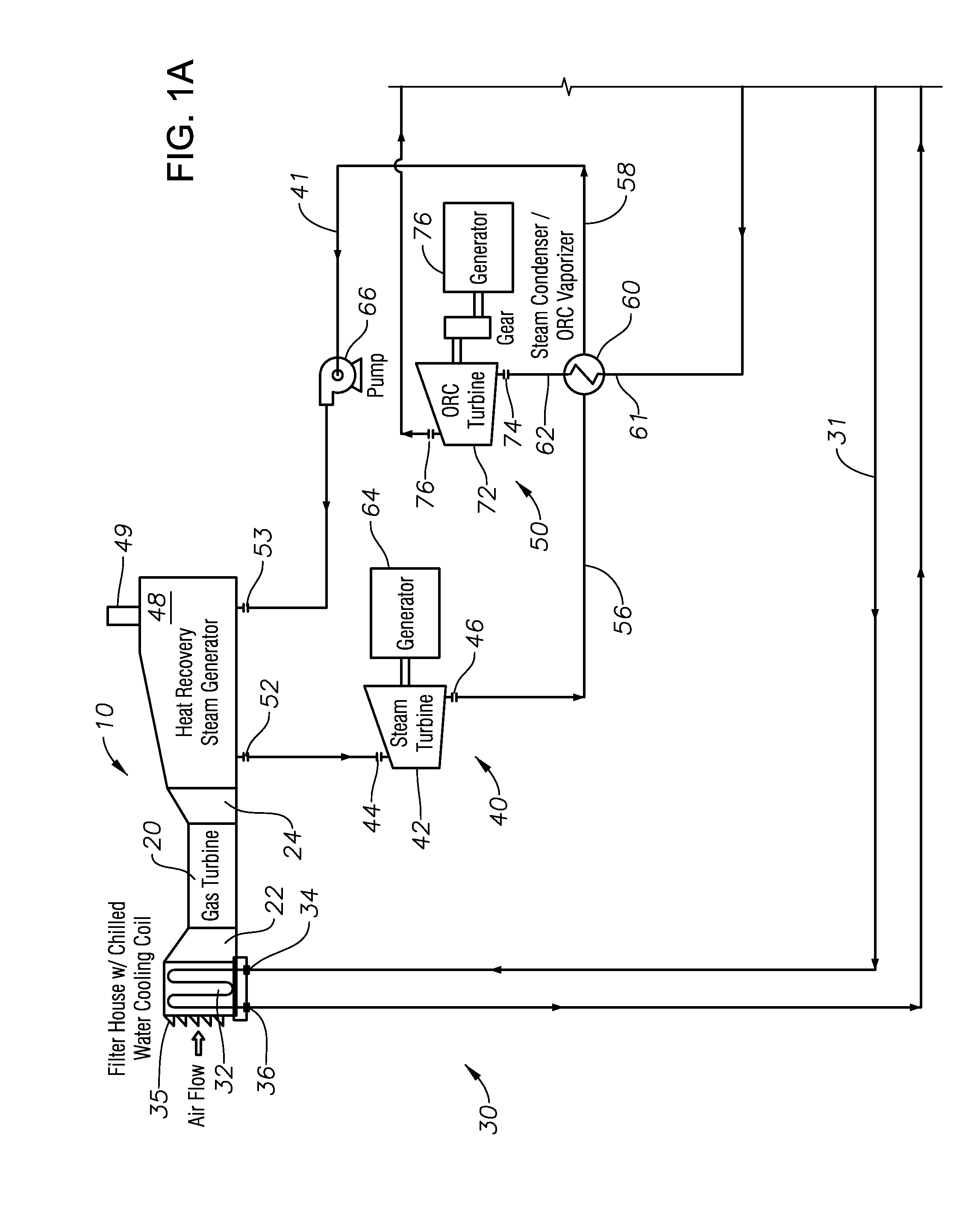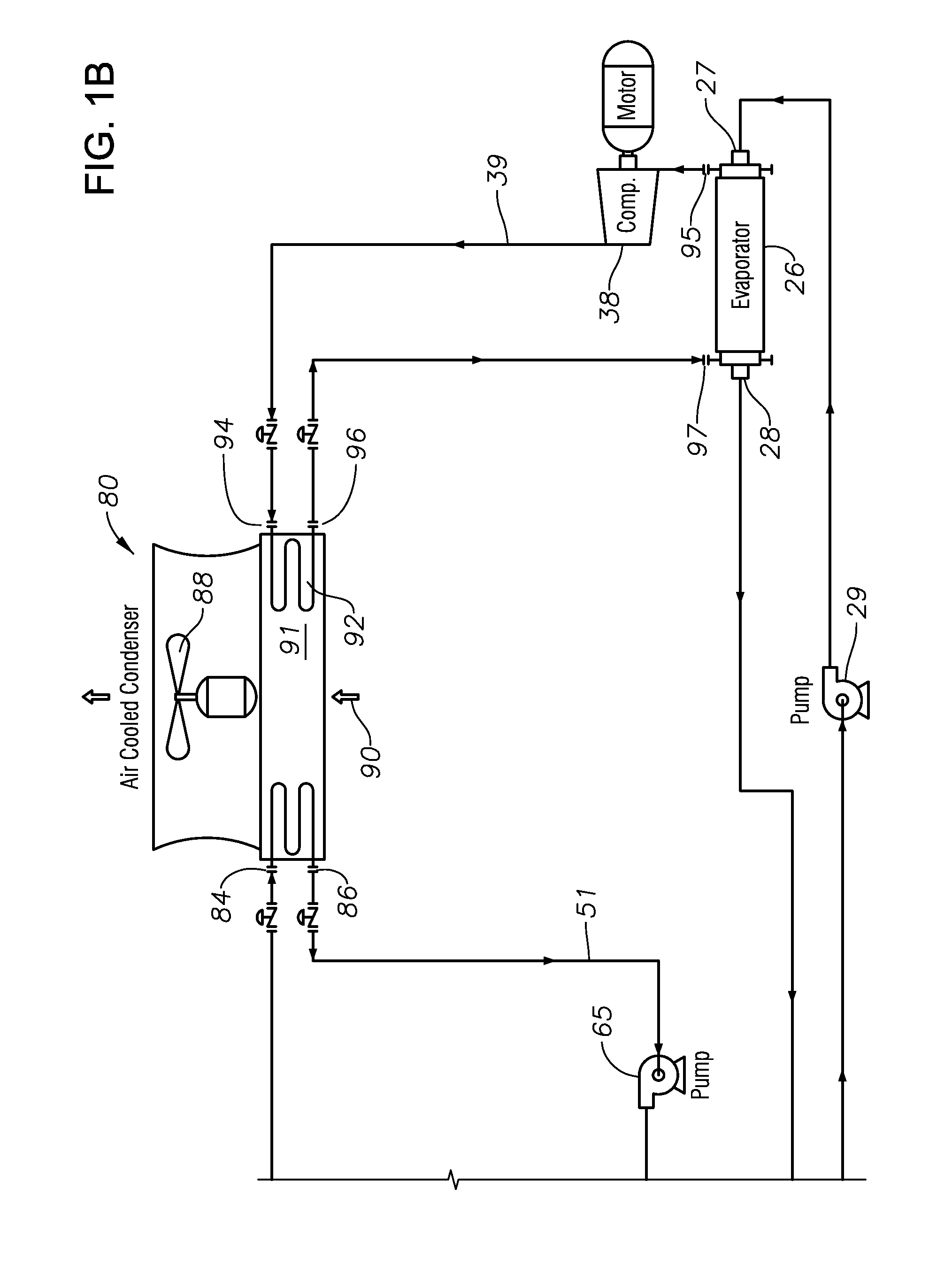Process Utilizing High Performance Air-Cooled Combined Cycle Power Plant With Dual Working Fluid Bottoming Cycle and Integrated Capacity Control
a combined cycle and working fluid technology, applied in the direction of machines/engines, mechanical equipment, light and heating equipment, etc., can solve the problems of increasing the pressure on the industry to eliminate, water circulation rate, cooling system, etc., to reduce or eliminate the need for cooling water, reduce or eliminate the variation in the performance of the combined cycle plant
- Summary
- Abstract
- Description
- Claims
- Application Information
AI Technical Summary
Benefits of technology
Problems solved by technology
Method used
Image
Examples
Embodiment Construction
[0018]With reference to FIGS. 1A and 1B, there is shown a schematic of a. combined cycle power plant 10 of the invention, generally having a. combustion turbine 20, a turbine inlet cooling system 30, a steam turbine topping system 40, an organic fluid bottoming system 50, a steam condenser / organic vaporizer 60, and an air-cooled organic fluid condenser 80,
[0019]FIGS. 2A and 2B illustrate the same components of power plant 10 as FIGS. 1A and 1B, but includes an optional thermal energy storage system 100 and an optional condenser spray system 120, either of which can be used alone with the system of FIGS. 1A and 1B or in combination with one another as part of the system of FIGS. 1A and 1B.
[0020]In one preferred embodiment, combustion turbine 20 is a natural gas turbine having an air inlet 35 which would contain or be attached to an air cooling coil 32 of the turbine inlet cooling system 30. The air cooling coil 32 utilizes chilled water circulated therethrough to cool the inlet air t...
PUM
 Login to View More
Login to View More Abstract
Description
Claims
Application Information
 Login to View More
Login to View More - R&D
- Intellectual Property
- Life Sciences
- Materials
- Tech Scout
- Unparalleled Data Quality
- Higher Quality Content
- 60% Fewer Hallucinations
Browse by: Latest US Patents, China's latest patents, Technical Efficacy Thesaurus, Application Domain, Technology Topic, Popular Technical Reports.
© 2025 PatSnap. All rights reserved.Legal|Privacy policy|Modern Slavery Act Transparency Statement|Sitemap|About US| Contact US: help@patsnap.com



